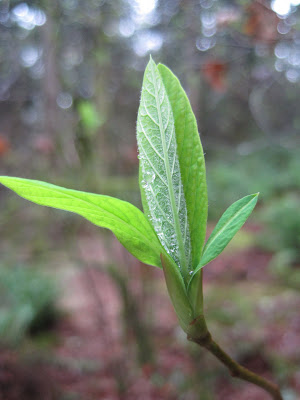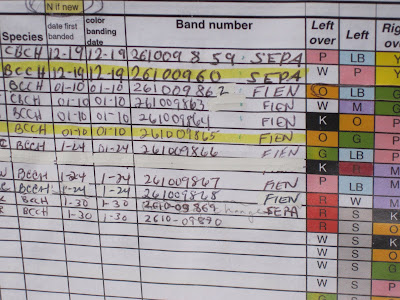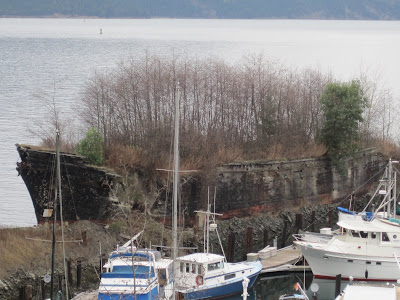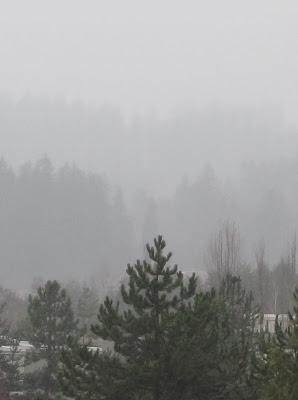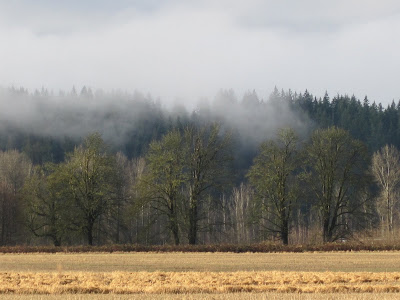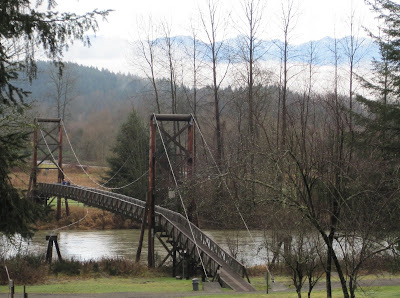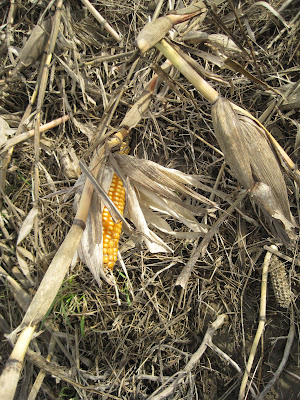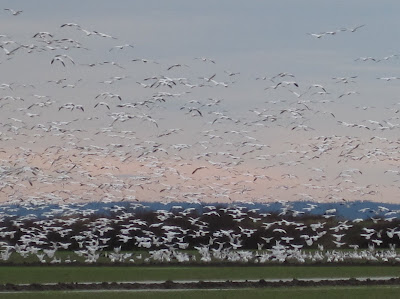Nisqually River from the Powell Creek Property

I spent another morning working with the Nisqually Land Trust on the Powell Creek property. This is the farm that I wrote about in late September. Since then much more debris was trucked away. There are still large concrete foundations to be broken up and removed but I could see the open area is doing quite well.
Today we planted bareroot trees. We worked our way back into the woods along the river. Unlike the project last month, we had only a scattering of older trees so there was not the constant damp to content with. I never clonked my head on low branches like last time and my rain pants are mud free.
I worked with a young man named Aaron. He was working as part of a class in college. He selected this project as he grew up about five miles away. His father worked at Wilcox farm back in his day and he told me about their egg separation plant. During the course of our mornings work, we worked next to a member of the BOD of the Land Trust and he told us about how vital a partner the Wilcox Farm family has become.
This is the staging area. Aaron is holding a bundle of 20 trees. We place tubes around the trees and the whole unit is staked to the ground. The tubes protect the young tree from deer and elk. The tubes and stakes are prepackaged in bundles of 20 in the bags filling the right side of the shed. Add a shovel and mallet and you are set.

Aaron has two pre-teen boys who he feels might benefit in getting out and doing some activities like this. I told him that I thought it was a great way for the family to have some time together. Aaron had mentioned a little crossroads place up the highway that had great hot dogs. Sounds like a family work morning followed by hot dogs is in the future.
In no time we planted about 80 hemlocks. There was lots of chatting and everything went at an easy pace. Once again the weather was fantastic. There was some great sky drama with bold clouds and rapid changes that seems to say the weather is setting up to be a bit wild.

The neighbor farm certainly makes a pretty picture.

The open area just south from Septembers work party is staked with flags for the work corps coming in.

This poor tree was harvested or trimmed poorly. It is trying to hang in there.
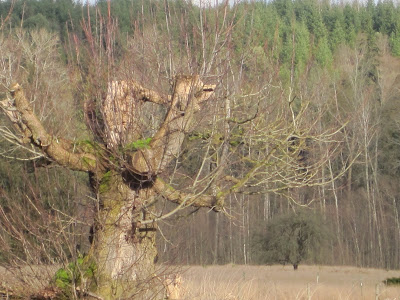
The weather certainly looks as if it is going to be changing over the next few days and certainly what the weather will be depends on what side of the convergence zone you are on. I hope for more big dramatic skies and low winds.



